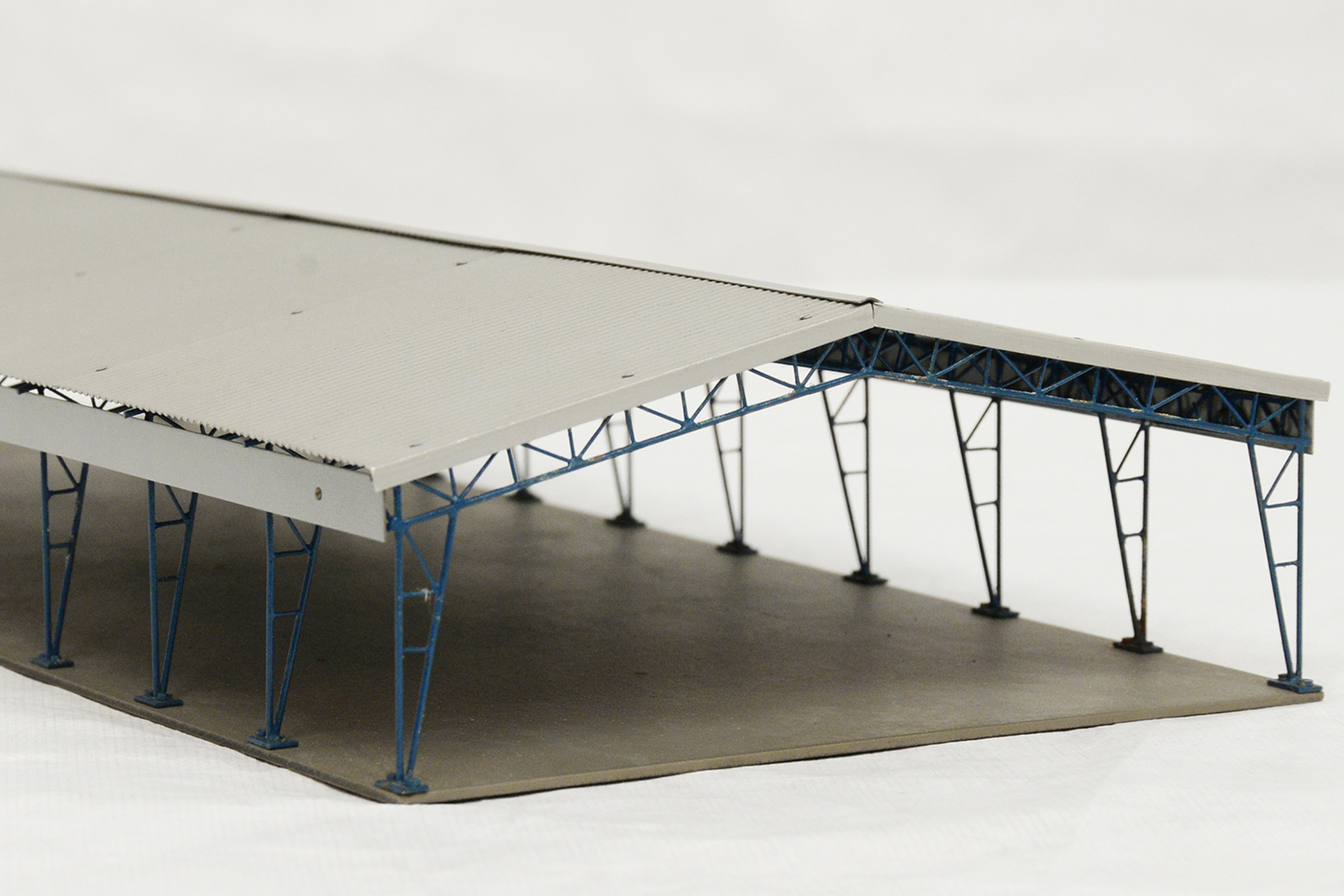Cultural Heritage Construction Exhibition in the Architecture Pavilion of TU Braunschweig
Bridges, halls, elevated railways – the buildings of high modernism from the years 1880 to 1970 are getting on in years and their existence is severely endangered. However, the assessment of this most recent architectural heritage in accordance with monument protection regulations has only been rudimentarily developed. This is where the priority programme “Cultural Heritage Construction”, funded by the German Research Foundation, comes in. In an exhibition at Technische Universität Braunschweig, various projects will present themselves at the annual meeting starting on 27 June and will also show original components, material samples and historical toy construction kits.
In the building industry, tasks are increasingly shifting from “new construction” to “building in the existing fabric”. “The majority of the building structures and infrastructures that will be needed in the future have already been built, at least in large parts of Western Europe,” says Professor Klaus Thiele from the Institute for Preservation of Structures at TU Braunschweig. “Due to the ageing of existing structures, strategies for the preservation and strengthening of structures have become considerably more important.” With his institute, Professor Thiele is committed to a sustainable approach to building stocks, including with research in the priority programme “Cultural Heritage Construction – Foundations of an Engineering-based and Networked Preservation of Monuments for the Architectural Heritage of High Modernity” funded by the German Research Foundation (DFG).
Focus on steel construction
The monument value of the buildings under consideration from the years 1880 to 1970 is often determined by structural characteristics. The construction thus becomes the actual cultural heritage. In a total of eleven sub-projects, interdisciplinary teams are researching the history of construction technology, monument preservation and new potentials of civil engineering in building preservation. Steel construction is of particular importance here, as high modernism is the epoch in which it developed to its full bloom. The rapid development of manufacturing, production and assembly technologies is reflected in the constructions. These innovations can be found in bridge construction, hall construction and also in residential and commercial construction.
For example, the project “Lightweight Steel and Metal Structures in the GDR” looks at the history of steel construction in the GDR – based on a collection of models from Stahlbau Niesky, which is being processed at the Bergakademie Freiburg. The sub-project “Mass Monument Industrial Hall”, in which the Lower Saxony State Office for the Preservation of Historical Monuments is also involved, is concerned with the aerial image-based recognition of hall buildings relevant to the history of building technology. Halls for industry, trade, agriculture and transport infrastructures are characteristic of high modernity. From 1914 onwards, an increasing number of standard or system halls were manufactured industrially in steel construction, the construction history and variety of types of which is still largely unexplored.
From measuring models to model kits
The two-week exhibition in the Architecture Pavilion of TU Braunschweig will present the fields of work of the eleven sub-projects of the priority programme “Cultural Heritage Construction” from 27 June. In addition to general information, interesting objects and impressions from the respective activities within the scope of the work will also be presented. For example, historical bridge bearings, concrete reinforced with carbon fibre, drilling samples, the steel lamella of a Junkers arch hall, components from steel space support structures of the VEB Metallleichtbaukombinat, replicas of historical engineering measurement models as well as model construction kits of the Mannesmann and MERO companies from the 1950s and 1960s are central objects of the exhibition.
Exhibition
26 June – 07 July 2023
Opening hours:
09:00-17:00
Venue: Architecture Pavilion, TU Braunschweig, Pockelsstraße 4, 38106 Braunschweig
Book presentation
05 July 2023, 13:30
Venue: Architecture Pavilion, TU Braunschweig, Pockelsstraße 4, 38106 Braunschweig
Olaf Gisbertz / Mark Escherich / Sebastian Hoyer / Andreas Putz / Christiane Weber (Hg.): Reallabor Nachkriegsmoderne: Zum Umgang mit jüngeren Denkmalen. Für das DFG-Netzwerk Bauforschung Jüngere Baubestände 1945+.
Based on ongoing projects from the DFG network, this book shows possible perspectives for dealing with younger building heritage.

